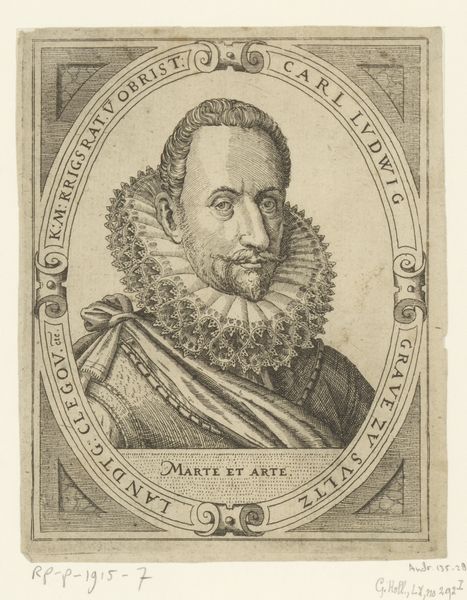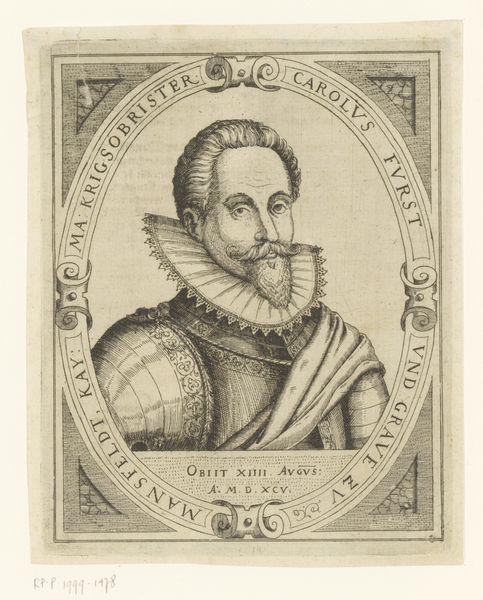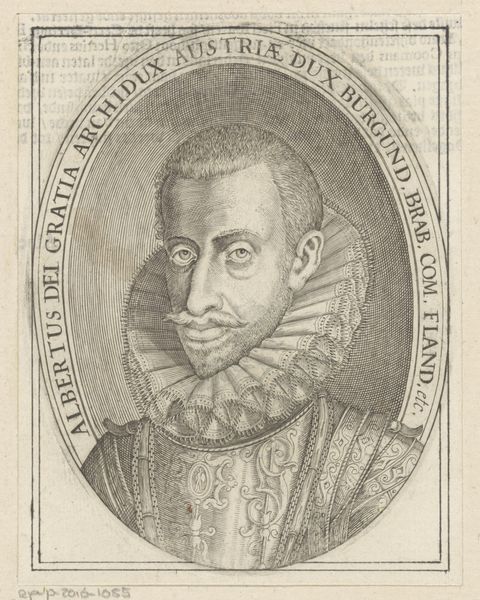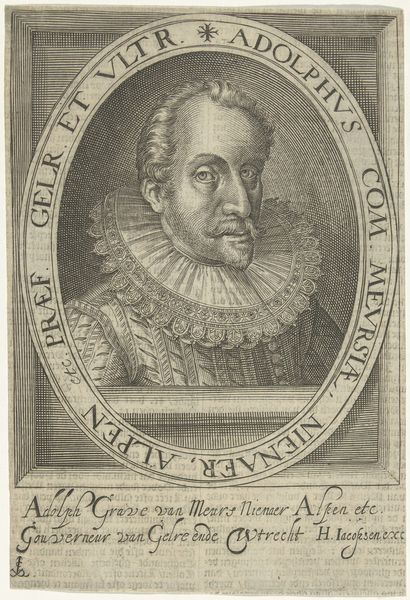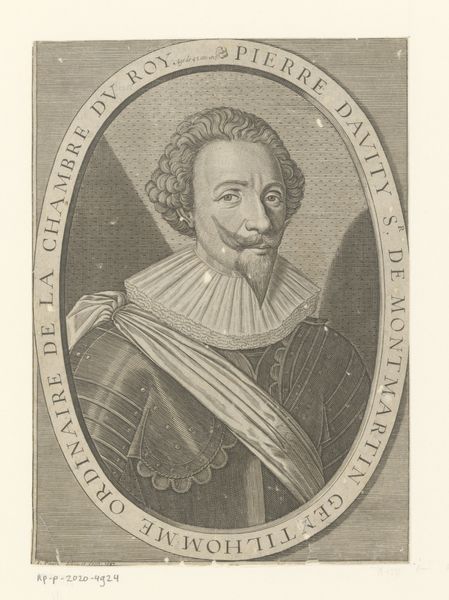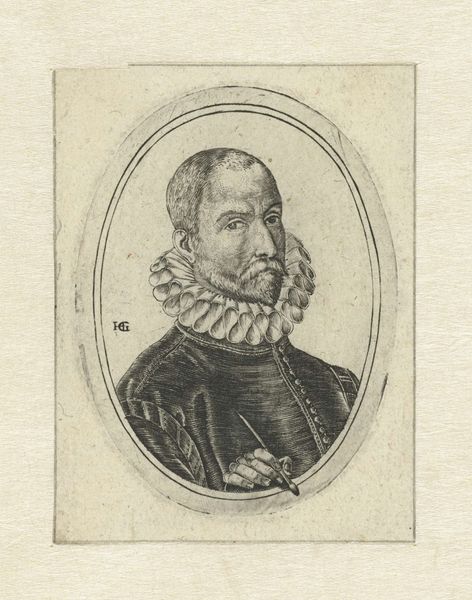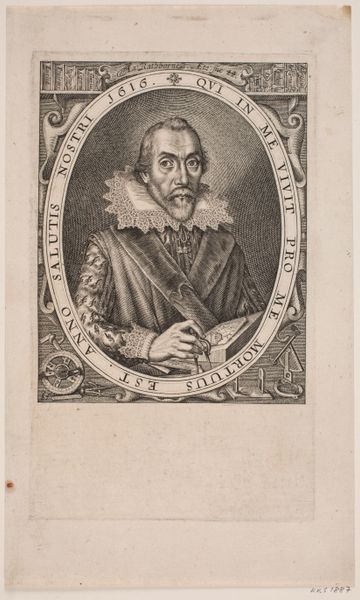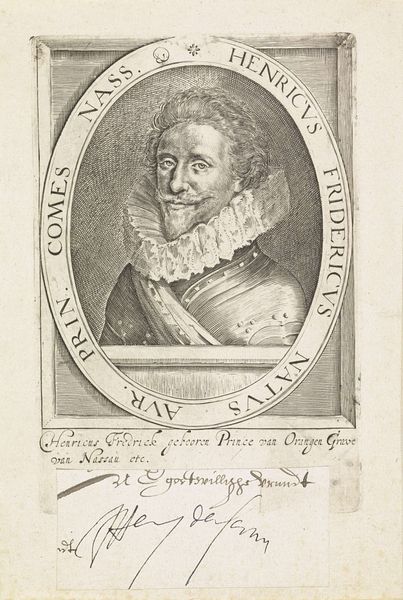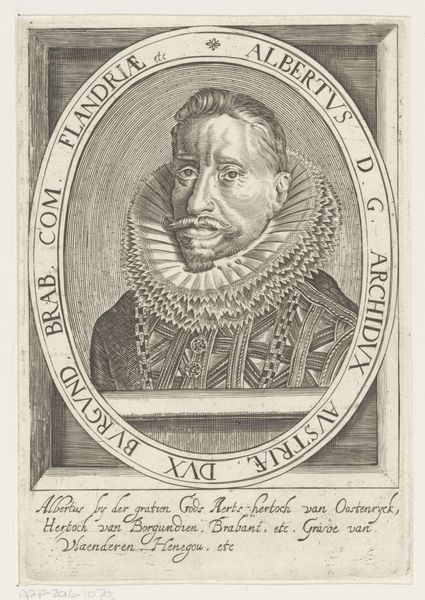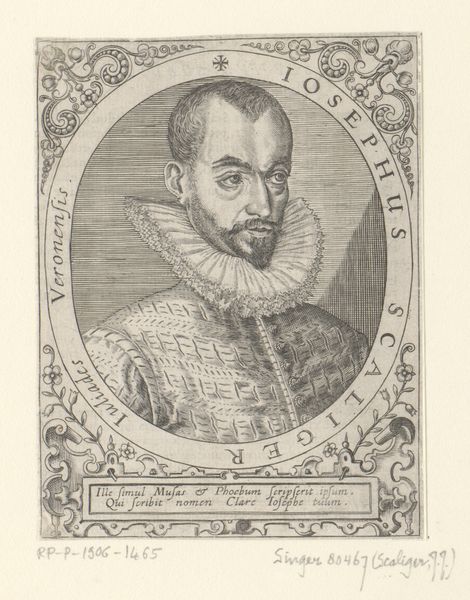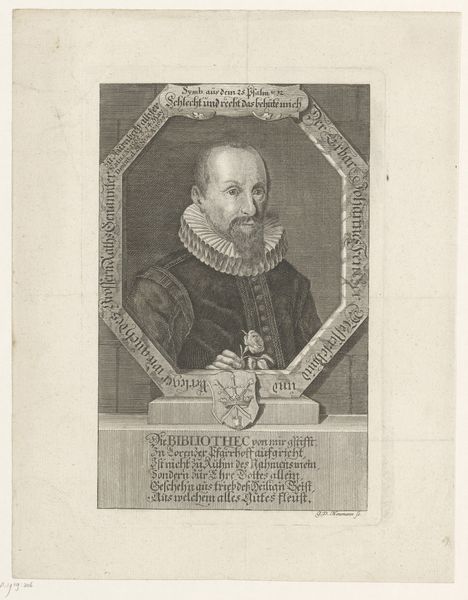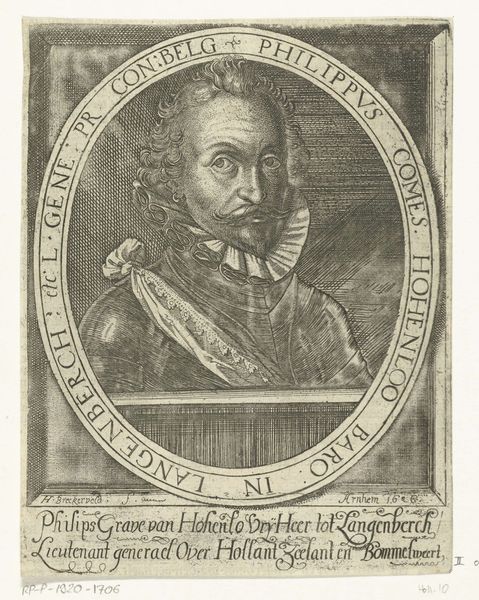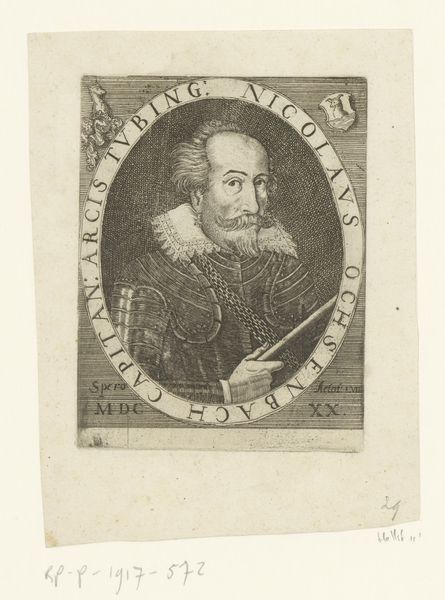
print, engraving
#
portrait
# print
#
old engraving style
#
figuration
#
11_renaissance
#
line
#
northern-renaissance
#
engraving
Dimensions: height 160 mm, width 125 mm
Copyright: Rijks Museum: Open Domain
Curator: The crisp lines of this engraving really catch my eye; it possesses a formality that makes me quite curious. Editor: Indeed. What we're observing is a print made between 1590 and 1611 by Hans Sibmacher, titled "Portret van Carl Ludwig, graaf van Sulz, landgraaf van Klettgau." It captures the image of Carl Ludwig, Count of Sulz and Landgrave of Klettgau, in the Northern Renaissance style. Curator: The lace ruff is intense! And those determined eyes. The entire visual vocabulary declares rank and purpose. But I sense more. Those visual tropes—the armour and elaborate attire—are clearly signifiers of power, prestige and cultural standing during this time. I see that, while acknowledging, maybe slightly undermining it? I wonder what statements such portraits made? Editor: I am especially interested in your reading of it as almost subversive in nature. Consider the period’s appetite for portraying powerful figures. It reveals not just individual identity but also an idealised vision of the role one assumes. In the late 16th century the very act of disseminating one’s image became entangled with solidifying one’s political standing. Who controlled distribution controlled their public image. Curator: That makes perfect sense, now, particularly considering Sibmacher's profession as an artist for heraldry. It must have carried social and institutional weight to create one's coat of arms and the other such symbolic decorations here, but the Latin inscription, "Marte et Arte" or "By Mars and Art," beneath Carl Ludwig's likeness hints that military strength goes hand in hand with cultured skill! Editor: Absolutely! It reinforces how interwoven military might was with political and social control. Such carefully chosen elements tell the knowing contemporary viewer everything about Ludwig’s position within the socio-political network of his era. It makes us consider who portraits actually speak to, and on behalf of. Curator: Thinking about how this image circulated – reproduced for broad dissemination in a world grappling with changing power structures – certainly elevates the engraving beyond just portraiture. Editor: Precisely. Understanding these portraits not merely as images of men but as meticulously crafted political messages allows us an ever richer connection with figures of this era.
Comments
No comments
Be the first to comment and join the conversation on the ultimate creative platform.
